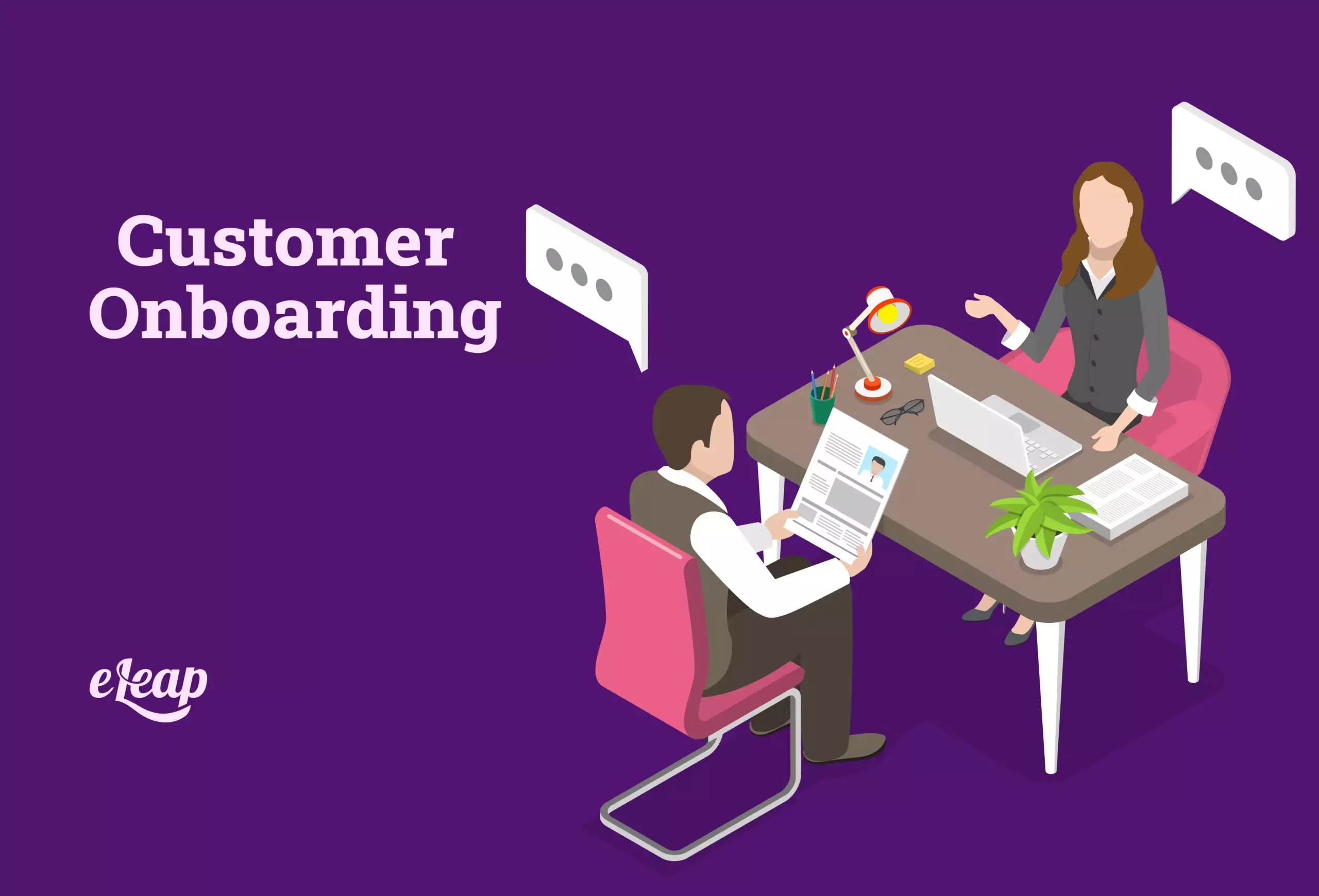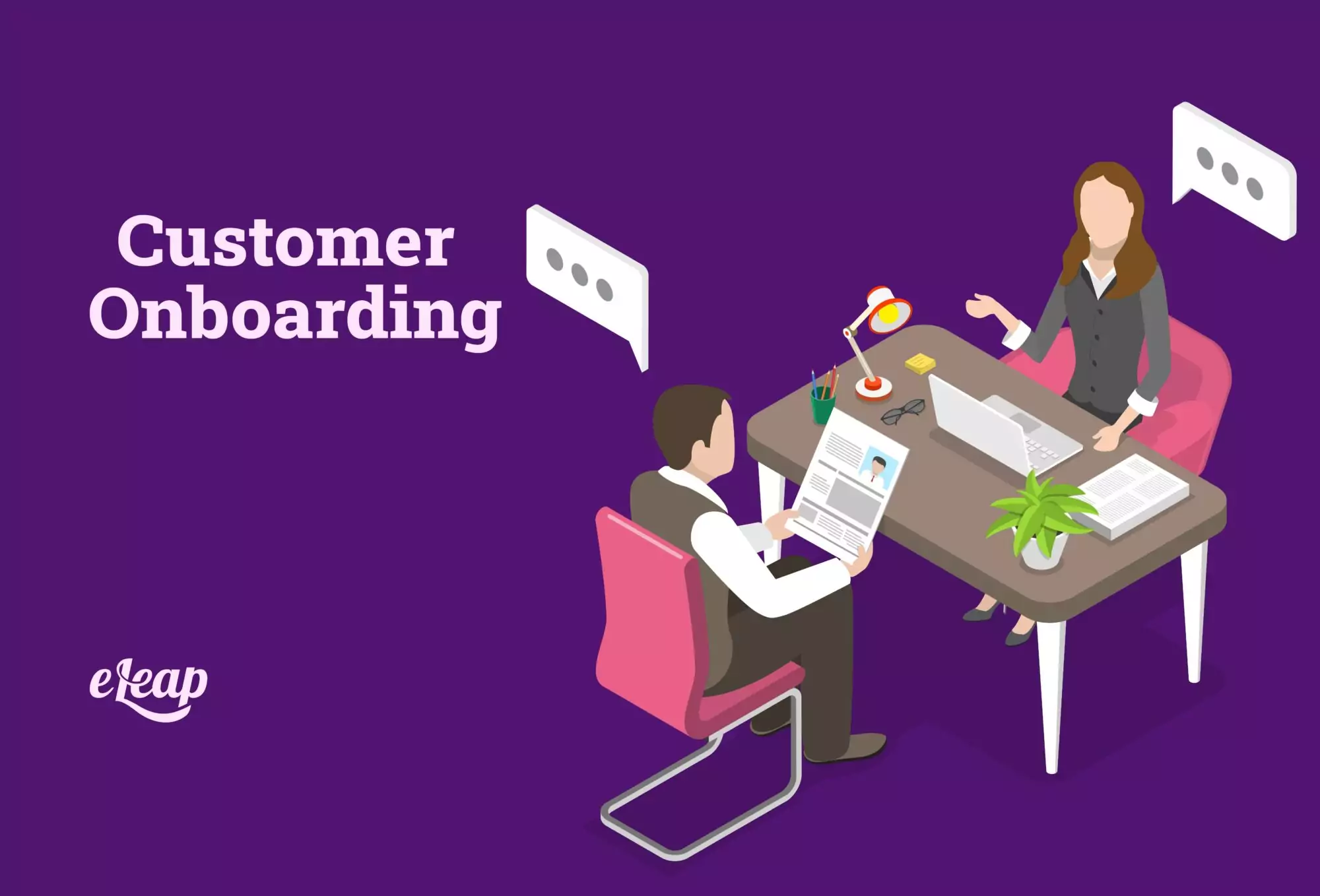Customer Onboarding
Successfully onboarding new customers

When you have a product or service to sell, you not only face the challenge of gaining customers but of holding on to them. This means that you have to show someone they “need” your product or service. Yours is the product to select over your competitors’, and that the consumer should continue coming back to get more of the product or receive the service again. That’s a hefty task! Once you win your new customer, make sure your customer onboarding process is airtight.

In this article, we give you the low down on customer onboarding so that you can feel successful in gaining—and keeping—a customer base.
Definition of Customer Onboarding
Customer onboarding is the steps that a business takes to recruit and keep new customers. During this process, the business teaches or shows consumers how to use their product or why their service is essential. They detail the value of their offering as well as give the buyer an idea of what their customer experience will include.
This begins with the first impression that the customer has of your business, which might be out of your control as a company. If your customer hears of you through word of mouth or during the process of them showing another potential customer your product, you want to make sure that that referral is going to be a positive one.
From the first moment when a consumer realizes that they want or need what you are selling, their user experience begins. This moment often cannot be quantified, but it creates an emotional response that is hard to let go of. The more control you have over your current customers’ experience, the more you can trust that the initial desire for your product will be positive for others.
Onboarding can mean a few things. If you offer a free trial of something, onboarding means creating paying customers. It can mean gaining website traffic so that people know your ‘name.’ How are consumers going to know that they need what you have if you haven’t shown them a place where their lives could be improved with your offering?
Reeling in and hooking customers from the beginning means that long-term success is more predictable. The more a consumer feels that your product is improving their lives, the longer they will stay your customer.
The Steps and Process of Customer Onboarding
Follow these steps and the process of onboarding your customers will flow seamlessly.
First Connections
From the get-go, your consumer should feel appreciated, valued, and understood. People want to be listened to if they are parting with their money, and they want to be confident that you will be there to help them if a concern arises.
Make sure to use your market research to predict what your customer might want or need. What are their access and pain points? What do people like them typically want or need when they are purchasing what you have to sell?
Hit the Ground Running
Provide your customer with everything that they could possibly need to be successful using your product or to keep them coming back for more (in a positive way). Give them the expectation that as they continue to use your offering, they will be treated with respect and value and that they will continue receiving benefits from using your product or service.
Train Effectively
As excited as some people are to use a new product or service, sometimes after the initial hook, they will run into issues. As they use the product or service more and more, they might see problems or misunderstand its use. Make sure you give them resources to solve their problems or that you are available with kind compassionate customer service at any time they might need it.
Close with Adoption
Once the customer has decided that your offering brings consistent value to their life, they will adopt it as one of their habits.
Ensure Retention
Keep them satisfied and they will continue to show their loyalty by increasing your profits and revenue. Collect feedback and don’t be afraid to grow as your customers’ needs will also evolve.
Resources for Onboarding
There are many individual ways that companies onboard customers, depending on their market demographic and the areas where they advertise. Here are some ideas.
- Sign-up process – This beginning stage can be a place where you gather data and begin the “ease of use” feel. If it is easy to sign up for a service or purchase a product, that gives a positive feeling from the get-go.
- Welcome email – A customer feels an even greater pull when they have an ‘in’ from the first moments. Send something right away that tells them even more: benefits from your company, further steps they can take to increase value, and exciting additions that they can explore.
- Initial login – This is the place where you want to continue making things streamlined and user-friendly. It is also where you can show an attractive, enjoyable interface.
- Import of Data – If people need to have certain information before going further in the use of a service, they might stop and not come back. Have an option to “skip the step” or “input later” so that they don’t feel stuck. Alternatively, you could show the customer what something will look like when they do input data so they get a feel for the next steps.
- Follow-up communication – Consumers often need reminders of what they initially decided they needed or wanted. Don’t be afraid to keep putting yourself out there electronically! Give your consumers additional information about how your product or service will improve their lives.
- Product-specific tutorials – Tours, videos, step-by-step push notifications, and checklists are great ways to make sure that your customer understands all the ins and outs of your service. Make sure that these are optional: some customers will come in needing them and others will want to bypass if they already feel comfortable using your product.
- Documentation – Although many people don’t enjoy this step, it is an important piece of the process so that problems can be solved easily and customers can be empowered to find the information they need. Give consumers a product guide, tutorial space, or FAQ area where they can get their questions answered. This also saves time and customer service resources.
- In-app notifications – This is a high-impact way to keep customers satisfied if you are offering a technical product or service. In-app notifications can bring your customer’s attention to key features that they are not using, it can bring back users who have begun ignoring the products, and it can create engagement.
- Check-in calls – In today’s day and age of technological advancement, many people still crave that human connection. It is often thought that interacting with a computer is easier and faster, but for some people, simply being able to talk to a real person and get a quick question answered can feel like a breath of fresh air. In your initial data, find out if this is something a customer would like and when the best time to give them the check-in call would be.
- Swag – Swag is the perfect passive marketing tool. Deck out your new and loyal customers with stickers, bags, keychains… anything that can make them feel connected to the company and get others noticing your brand. When a new potential customer sees swag on an existing user, they will ask questions while inherently taking in the information that the company is solid and important enough to even have swag in the first place.
Customizing the Process for Your Individual Needs
When you are thinking about adding any of the above services to your customer onboarding process, you will also need to think about your unique product offerings. What are the most important or unique features of your program that you want people to know about? How complex is your product and what is the level at which you will show that complexity to the customer? Are there any limitations in place? What data do you need to give the appropriate experience to the consumer?
It is also important to consider the customer specifics. Is your consumer coming into your zone with pre-set expectations or previous user experience? Will onboarding with you need to be tangible or technical? Can you teach with a one-size-fits-all program or does each user need to be taught one-on-one?
Automation through Artificial Intelligence
Many of these customer onboarding procedures can be automated with advances in technology. Email services, chat boxes, and AI customer assistants are all benefits that can keep many customers helped and happy when it is impossible for a business to take care of each customer individually.
Decades ago, using these types of systems to improve a business would have been costly and technologically straining on many companies. However, they have become so common and easily accessible that even the smallest of businesses can implement some form of artificial intelligence into their business.
This is an effective way to use monetary and time resources. The better resources are used, the more profitable your business becomes.